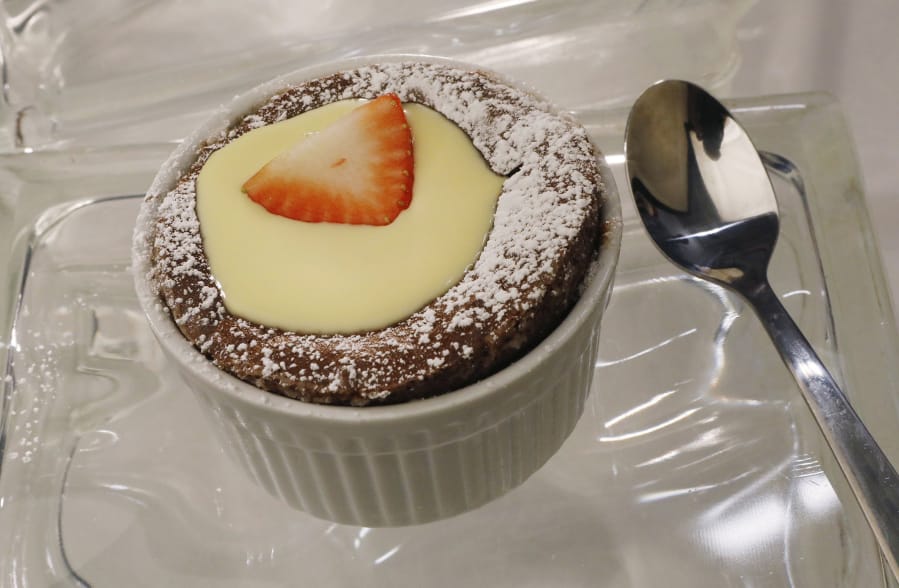Working with a quarter of the whipped egg whites at a time, gently fold them into the yolk mixture until almost no white streaks remain. Pour the mixture into the prepared pan and sprinkle with the remaining 2 tablespoons of Parmesan. Bake until the top is nicely browned and the center jiggles slightly, 25 to 30 minutes. Serve immediately.
Per serving: 448 calories; 35 g fat; 19 g saturated fat; 231 mg cholesterol; 24 g protein; 10 g carbohydrate; 4 g sugar; no fiber; 845 mg sodium; 648 mg calcium
Recipe from “The America’s Test Kitchen Family Cookbook”
Bittersweet Chocolate Souffle
Yield: 8 servings
1 tablespoon butter, cut into 1/2-inch pieces, plus more for buttering ramekins
1/4 cup granulated sugar, plus more for sugaring ramekins
8 ounces bittersweet chocolate, up to 70% cacao, chopped
1 tablespoon all-purpose flour
1/2 cup whole milk
1 teaspoon vanilla extract
1/2 teaspoon instant espresso powder dissolved in 1/2 teaspoon water, optional
Pinch of salt
3 large eggs, separated, plus 1 additional egg white
Powdered sugar, for dusting
Vanilla custard sauce (recipe follows) or softly whipped cream, optional
Note: You will need 8 small souffle dishes (ramekins), preferably 5 1/2 to 6 ounces each, or you can use a 6-cup souffle dish; the larger dish will take 32 to 38 minutes to cook until the souffle is set and firm to the touch in the center.
Generously butter each souffle dish, including the rims, dust them with granulated sugar and tap out the excess.



